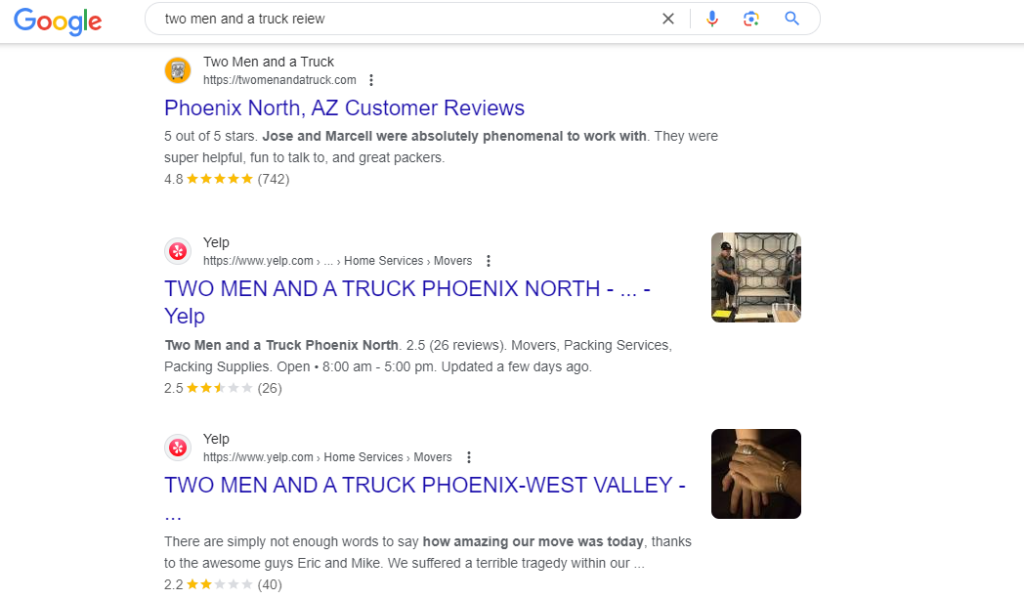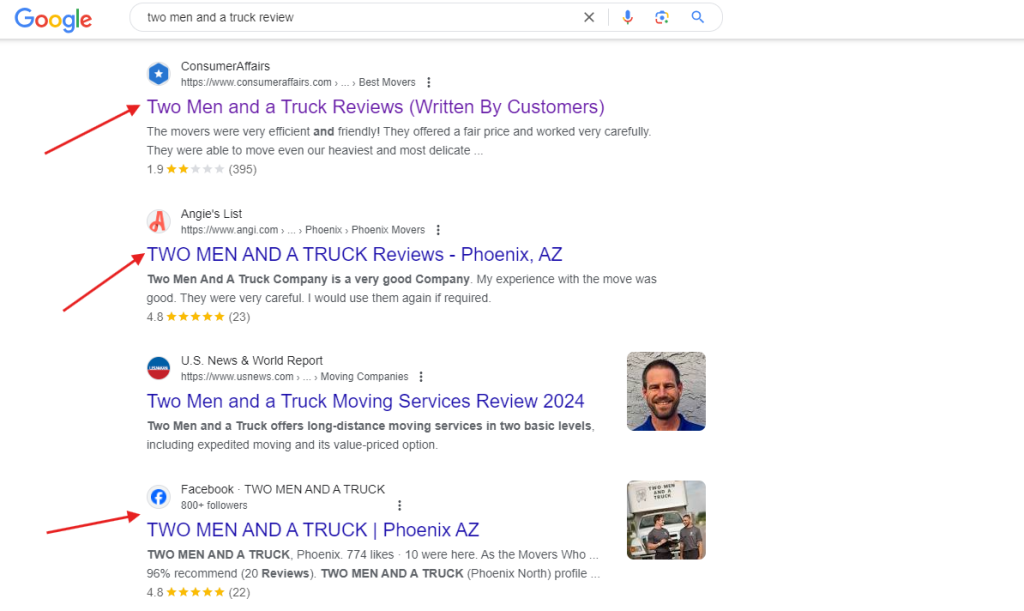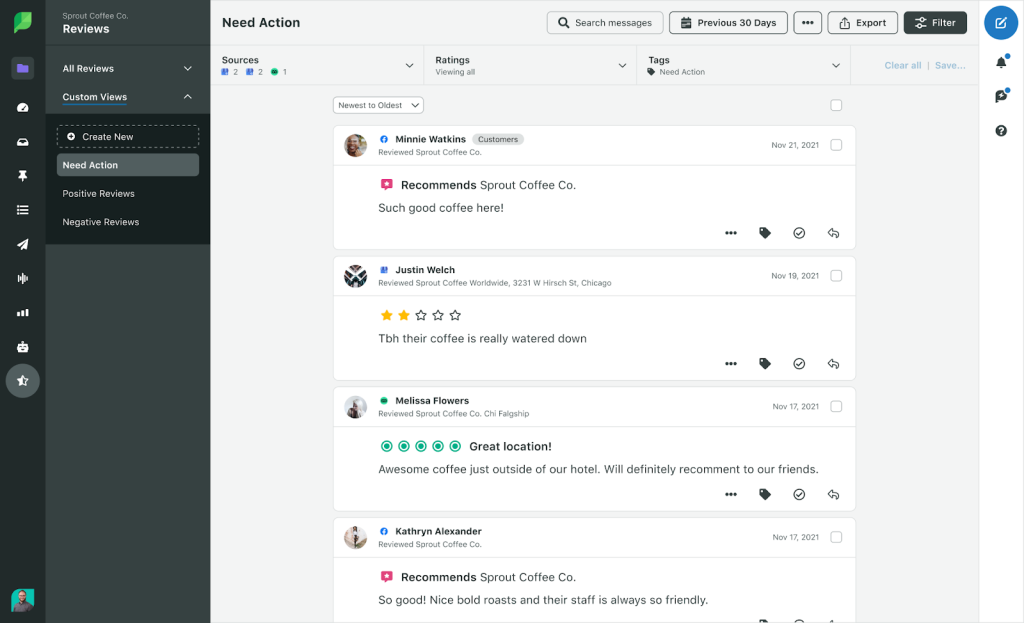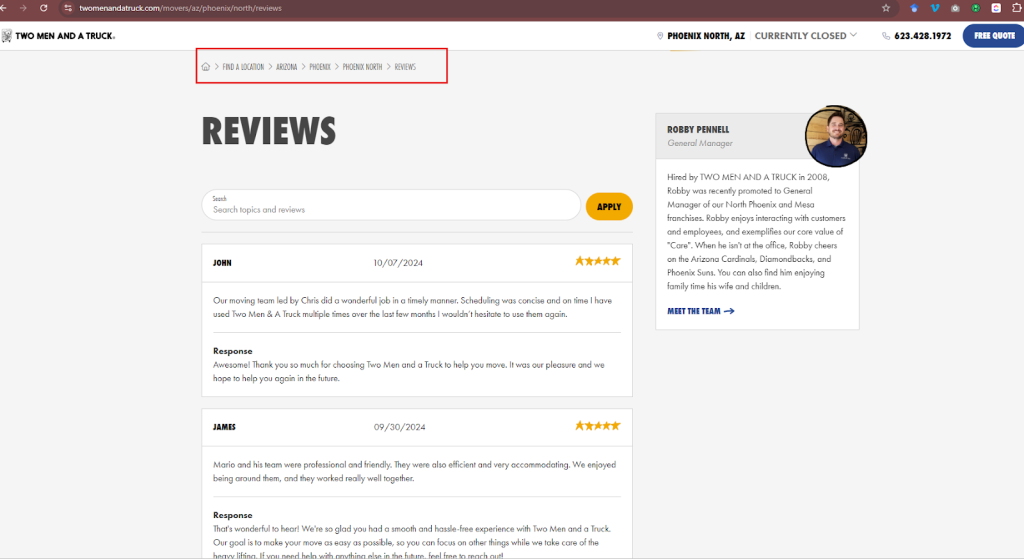Review Management Strategies for Local Businesses
Review management is the process of monitoring, analyzing, and responding to customer reviews from different review platforms. It’s an activity that helps you engage customer feedback (or concerns) about your business, know how they feel about your product/service, and how to improve.
Review management helps you:
- Monitor what people say about your business
- Analyze the patterns in their sentiments to know where and how to improve.
- Respond to their positive and negative reviews to show that you value their feedback and are committed to doing better.
This is because 98% of consumers read online reviews before making any purchase decision, and 46% trust these reviews more than anything you say about your product or service. The more the reviews you have, the better. But beyond that, why should you care about online reviews?
Why Should You Care about Review Management for Local SEO?
Online reviews are valid feedback that can hurt or improve your brand image and help your local SEO. Your goal as a small business owner is to attract local traffic to your business.
For this purpose, the more optimized your Google Business Profile, the better your chances of gaining visibility with your target audience. However, your reviews are a much better catalyst to show the credibility of your business.
Having reviews:
1. Helps Buyers Decide Whether to Try Your Product or Service
Imagine this:
A college friend reached out on Facebook after 10 years. You’re a little surprised yet excited to speak to her.
After a few messages, she tells you her husband has built a 50,000-square-foot horror-themed park for adults and kids. It’s Halloween season, so it’s a good time. You click her Facebook profile and see their business page. You scroll down and find reviews about how exciting their special effects are: the thrill of the wizard adventure and magic wands and the hyper bowling, where interactive bumpers allow kids to score points by hitting moving targets.
You head to Google to search for their business name and see more reviews.
You click back to Facebook when you see the message pop up, “No pressure, but do you want to come take a look with your family? Special discount for you.”
You went through the hassle to confirm if they are a legitimate business, and so would 72% of your customers, who wouldn’t take any action until they read reviews about your business. So, having enough reviews validates that your business truly exists (and is credible) to people who haven’t heard about you.
2. Influences Rankings in Google Map Pack
Google prides itself on delivering the exact results users want. That’s why if you search “moving company nearby,” the top results are from movers around you. If you scroll down or click on one of the results, you’ll see reviews from people who have used the moving company before.
This is because reviews are also a ranking factor for local businesses. Google considers 5 factors when ranking your profile based on reviews:
- Count: The number of reviews your business has. It tells Google that people interact with your business and that you’re credible. The more the number, the more credibility and visibility you’ll get.
- Recency: Recent reviews show that your business is active and relevant. 83% of consumers also prefer recent reviews before they can care about the business. The more regular, fresh feedback you get, the better your position on the results page.
- Frequency: Consistency in how you get reviews matters, too. Consistent reviews help you maintain your business’s prominence in search results.
- Star Rating: Your rating influences consumer perception of your business before even reading any review. Google’s algorithm considers it the overall impression of your business, too. According to a BrightLocal survey, 71% of consumers believe the lowest rating you should have is 3 stars. Anything less than ⭐⭐⭐ and they would not consider your business at all.
- Reviewer Authority: Reviews from accounts with a history of thoughtful, detailed feedback have more weight than new or seemingly spam accounts. These reviews are considered more credible and have a greater impact on your ranking.
3. Enables You to Influence Consumer Perception through Responses
Consumers perceive your brand differently when you respond to reviews, especially negative ones. While 88% of consumers will visit your business if you respond to positive and negative reviews, 45% will specifically do business with a brand that responds to negative reviews.

This shows that your business becomes a bit more attractive when you respond to all reviews than when you don’t. It also shows that you respect your customers and don’t mind taking the time to acknowledge their experience.
How to Manage Online Reviews for Your Business
The first step in managing your reviews is to have access to the review platforms that matter to your business. But before I expound on that, I want to believe you already have a Google Business Profile optimized for your local business.
If you don’t, follow these tips to optimize your business profile to rank on the Google Pack.
You can also follow these tips to optimize your business profile even without a physical location (especially if you just started your local service-based business.
With that out of the way, here’s how to manage your reviews:
1. Claim Your Business on the Review Platforms that Matter
BrightLocal survey shows that these are the most popular review platforms:

Others include:
- Zomato for restaurants and eateries.
- Houzz for home decoration, architecture, and interior design businesses.
After choosing the site where your customers read reviews from the most, sign up and claim your business. To sign up:
- Visit the specific platform’s website and search for your business.
- If it pops up, look for the option to ‘Claim Your Business.’
- If it doesn’t (or if it does), register by providing your business details, such as name, address, contact information, and other necessary data.
- Proceed to claim your business.
To know where your customers read reviews from the most, search for your competitor + review. For example, if your competitor is Two Men and A Truck, you’d search “Two Men and A Truck review.”
They’re on Yelp:

They’re also on Angie’s List, Facebook and others:

You can then respond to each comment as they are posted.
2. Use Reputation Management Software to See All Reviews in One Place
If you receive many reviews from multiple platforms (and are a bigger business), use reputation management software to consolidate all reviews into a single dashboard. Here’s an example of what it looks like from Sprout Social:

If you zoom in, you’ll see reviews from Facebook, TripAdvisor, and others.
Some reputation management software includes:
- Sprout Social
- ReviewTrackers
- Podium
- Yelp
Using these tools helps you see and respond to all reviews. Some tools even allow you to tag someone on your team to respond to a review that is specific to them (say, the engineering team for your home renovation agency).
3. Respond to Positive and Negative Reviews
According to the BrightLocal survey, 75% of consumers always or regularly read reviews, and 61% (36%+25%) of these check two to three review sites before deciding to patronize a business.

Replying to these reviews signals to customers (and prospects) that you value their feedback and are committed to customer satisfaction. Now, how should you respond to a negative review?
How to respond to a negative review:
Remember that 45% of consumers will visit a business that responds to a negative review, so there are eyes on you. Also, people who left a negative review don’t mind being thanked for their feedback, so while replying, do these:
- Address the reviewer by name. You’ll most likely see their names on the platforms on which they wrote the review.
- Say, thank you to them for taking the time to share their experience.
- Apologize and sympathize with them for the experience.
- Take responsibility for what happened, and
- Offer to make things right by…
- … taking it offline so you can talk better.
By showing that you’re genuinely sorry and asking them to initiate contact so you can make it right, you show that you value their patronage and will compensate them for their experience. This single act can help you increase online sales when others see it.
Here’s an example of such response:

Here’s another example:

Tip: Read this article for more on how to answer negative reviews.
How to Respond to Positive Reviews
Only 28% of customers leave reviews after a positive experience. Perhaps if they see that you acknowledge all reviews, they’ll do it more. After all, 88% of consumers will use a business that responds to all reviews. So, to improve the chances of people writing reviews, do these to existing (or future) positive responses:
- Say “thank you”
- Repeat their positive feedback
- Mention that you’ll pass their compliment to the person they mentioned in their feedback. See the example here with Jessica:

- Tell them you’d love to see them again.
- Mention other products or services they can try (perhaps next time they visit). Here’s an example from ReviewTrackers.

- Share their review with the team, and share it online as well.
To learn more about responding to positive reviews, see more ideas from this article.
4. Have a Review Management Strategy
A review management strategy helps you create a structure to track and respond to all relevant reviews. This helps you pay more attention to reviews and decide how you will respond (plus the frequency of response) depending on the size of your business and your team.
If you’re a one-person business, consider the questions:
- How often can I check reviews?
- Which type of reviews should I respond to? Should I respond to neutral reviews or not?
- Which type of review should I repost on social media?
- Should I use automated responses for my reviews to save time?
While an automated response is good, it’s best to write your responses.
For mid-sized or bigger businesses, your concerns may be different, especially if you have a team. You need to answer the questions:
- Which team members should I assign to monitor this specific platform
- Should we schedule a day/time to respond to all reviews?
- What should be the “tone” when we respond to reviews— for brand consistency’s sake?
- Which type of review should we repost on social media?
- How do we collate these reviews to make actual changes in our operations?
Asking these questions can help you find answers on how to manage the reviews. It also helps you decide what to do with the reviews— how customer insights can improve your product or services.
5. Identify Fake Reviews and Request Removal
Fake reviews will mislead customers and hurt your brand. Also, 54% of consumers would not consider your business if they think your reviews are fake (either positive or negative), which is why you should find them and report them. Here are some signs that a review might be fake:
- The reviewer will try to persuade others to try an alternative. While some genuine reviewers might say this, fake reviews won’t provide specific details about the experience or mention irrelevant facts that don’t match your business.
- The feedback is out of line with the majority of other reviews, especially if it’s extremely negative or positive.
- Check their names and avatars. In this screenshot, a competitor is trying to pull a fast one on the business. You can conveniently flag this type of review as false.

- Check if the reviewer’s profile has no other reviews or history.
Once you’ve identified a potentially fake review, report it on the platform to get it removed.
Here’s the process to remove fake reviews on Google. Other platforms have their different process, but the following structure should be relevant:
- Compile evidence that supports why the review is fake. This may include inconsistencies noted, the generic nature of the account, or identical content found elsewhere.
- Click the platform’s Report button on the review itself. Choose whether “It’s spam” or “It’s inappropriate,” and provide the evidence if you’re prompted to do so.
- Follow up if the platform doesn’t respond immediately— just to ensure they take it down.
- In worst cases, especially if the review is really hurting your brand, seek legal advice (and action), which can involve suing the reviewer for defamation.
How to Get More Reviews Online
Now that you know how to manage reviews, if you’re yet to have an established brand presence or need more reviews, here’s how to get them:
First, ask directly for a review after the service or after they receive their product
When you’re certain you’ve done a good job with customer service, ask them for reviews. According to the BrightLocal survey, 69% of customers will leave a review if you ask. You can either ask after the purchase or through a follow-up email or SMS.
The top three methods have remained email (32%), in-person (28%), and via social media (27%).
If it’s in person, say something along the lines of:
“I hope you enjoyed your time with us today. Please scan the QR code (outside the door, on this counter) to share your experience on (specific platform). It’ll really help us.”
If you’re writing an email, you can write something along the lines of:
“Subject: We’d Love Your Feedback, [Customer’s Name]!
Hi [Customer’s Name],
Thank you for choosing (Your Business)! We hope you’re enjoying your (product/service). Your feedback is incredibly important to us and helps us ensure we’re delivering the best experience possible.
Can you spare a few minutes to share your thoughts? Here are a couple of questions to get you started:
- How did you find the quality of (product/service)?
- Is there someone you want us to pass a compliment to?
- Was there anything we could improve?
Please leave your review here (Insert Link).
Thank you for helping us improve and for being a valued customer!
Best,
(Your Name)”
If you’re desperate for reviews, you can offer an incentive for the review (although to follow recent FTC guidelines, you can’t offer an incentive with a condition. The incentive should be regardless if its a good/bad review). However, data shows that other businesses do it:

Also, if you’re sending an email, be mindful of the time. According to Reputation, sending review requests during the week increases response rates by 10%, as these days have higher engagement rates.
Other ways to get reviews include:
- To reduce friction in the review process, provide direct links to review platforms. To make it easier, consider embedding a star rating system directly in a follow-up email.
- If you operate in a physical location, place friendly reminders at the checkout area with instructions on where and how to leave a review. To improve the efficacy of this strategy, you can use QR codes that lead directly to review platforms.
- Respond to all reviews (positive and negative) to show that you value all feedback and are committed to customer satisfaction. It will encourage other consumers to leave a review.
- Use a dedicated section on your website to feature reviews. Seeing positive reviews can inspire other customers to add their voices. Here’s a dedicated page for reviews on Two Men and a truck website:

Conclusion
Online reviews bring you closer to your customers if you know how to use them. They let you engage your customers outside the typical business activity and also show you what you can do to improve future customer service. They can also be the secret to customer loyalty and can be helpful with word-of-mouth marketing. Consumers won’t patronize your business if they don’t see any reviews about it. It’s also how you validate that a business is legitimate, so having a system to monitor, analyze, and respond to reviews can make your small business successful as you scale. If you don’t have a method of monitoring your review, I hope you’ll get to work now. If you need help with your local SEO, you can always reach out to the team at HigherVisibility to increase leads and get “near me” traffic for your business.
